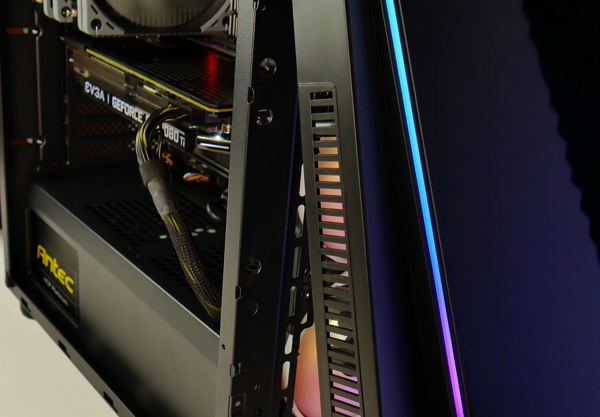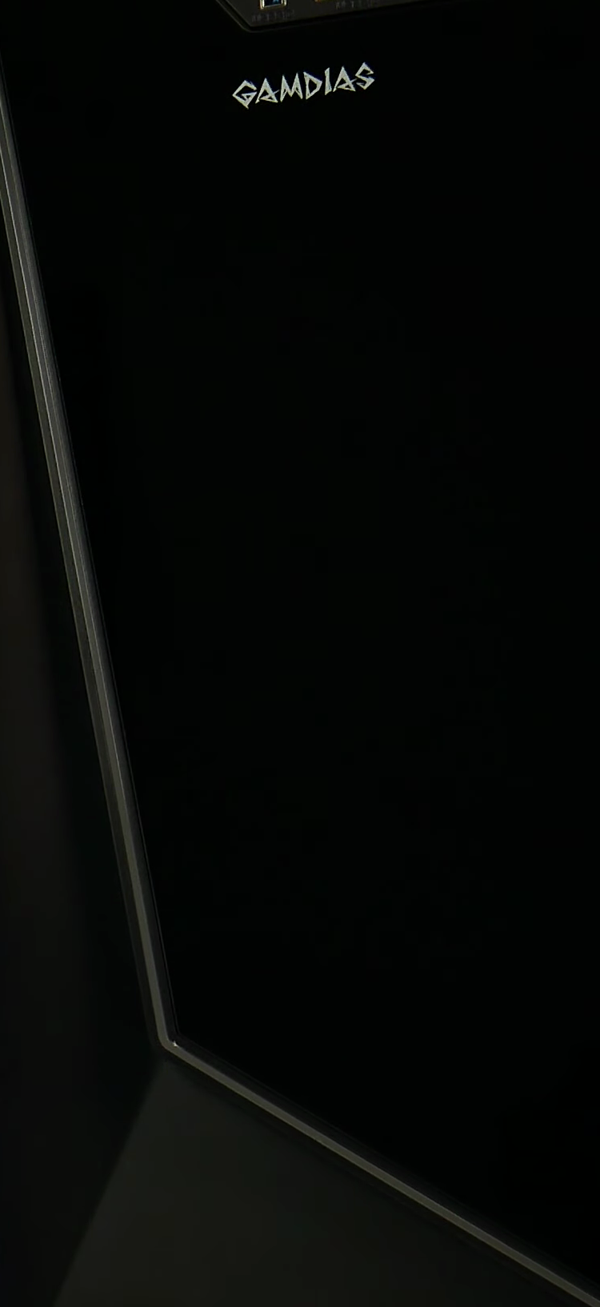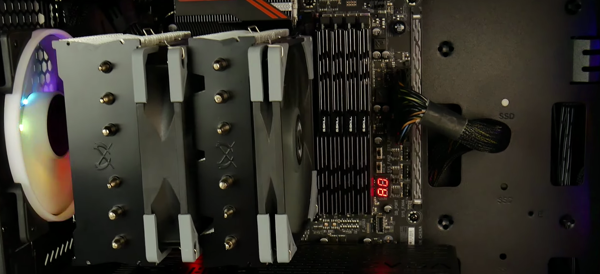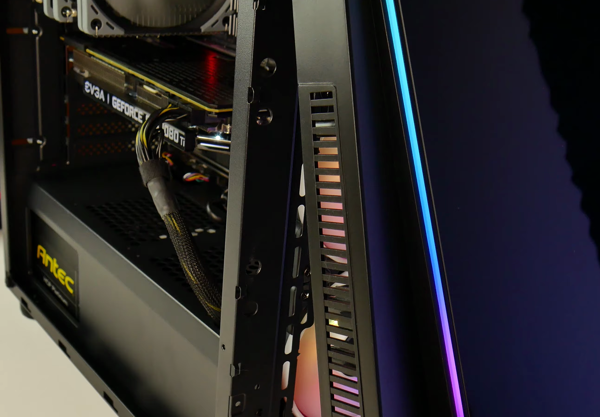Note: As an Amazon Associate I earn from qualifying purchases.
My thoughts on the GAMDIAS ATX Mid Tower Case with ARGB Fans & Tempered Glass (2024)
Introduction
I recently built a computer using the GAMDIAS GD-ATHENA M6 LITE case. I paid close attention to its design and functionality throughout the process. As someone who values both aesthetics and performance, I was eager to see how this case would perform during the build and afterwards.
Specifications
| Property | Value | Property | Value |
|---|---|---|---|
| Brand | GAMDIAS | Motherboard Compatability | ATX |
| Case Type | Mid Tower | Recommended Uses For Product | Gaming |
| Material | Tempered Glass | Power Supply Mounting Type | Mid Tower |
| Cooling Method | Air | Model Name | GD-ATHENA M6 LITE |
| Light Color | RGB | Fan Size | 120 Millimeters |
Photos
Click on photos to enlarge them:
Prices
Check prices of the GAMDIAS ATX Mid Tower Case on:
Design and RGB Experience

When evaluating the GAMDIAS GD-ATHENA M6 LITE, the RGB lighting is a significant feature for gamers seeking an immersive setup. The underglow RGB adds visual appeal, enhancing the overall appearance of the build. With a single click, the LED control creates a synchronized light show that can elevate any gaming environment’s ambiance.
From my perspective, here’s what I notice:
The tempered glass side panel provides a clear view of the internal components with RGB lighting.
Construction combines style and practicality. The metal structure effectively holds up internal components.
The RGB integration with the motherboard is smooth due to the ARGB connection. This feature syncs with compatible systems, creating a consistent lighting effect.
However, the material quality of this case is not as good as some high-end options. The metal chassis is sufficient but lacks the same weight and durability. This could result in potential bends or warps if not handled carefully, causing long-term issues.
But it’s not just about appearance; functionality is important too. This case accommodates various motherboard sizes, including ATX and Mini-ITX, making it a flexible option for diverse builds. Despite my preference for a minimalist setup with only NVME SSDs, the case provides sufficient space for extra storage devices if required.
Despite the room for enhancement in build quality, the Gamdias case impresses me for its aesthetics, customization, and ease of access during a gaming PC build. The streamlined cable management ensures a tidy and attractive setup.
The GD-ATHENA M6 Lite provides a mix of aesthetics and functionality for its price. Buyers should consider if the vibrant RGB and design are priorities over material quality for their gaming environment. For budget-conscious RGB enthusiasts, the GAMDIAS GD-ATHENA M6 Lite is an appealing option due to its visual appeal that could potentially serve as the focal point of any gaming setup.
Cooling and Airflow Capabilities

When evaluating the cooling and airflow performance of the GAMDIAS ATX Mid Tower Case, here’s a straightforward assessment based on my experience:
Pros:
This case supports various fan setups: two 140/120mm fans at the top, three 120mm fans and two 140mm fans at the front, and a single 140/120mm fan at the back.
Supports large AIO coolers up to 360mm in the front
The pre-installed fans generate pressure that keeps dust away.
Cons:
- The front panel lacks a dust filter for your primary intake fans.
- Users with sensitivity to noise might find issue with fan quality.
First off, the case design offers flexible fan and radiator options. It can support three 120mm or two 140mm fans at the front, along with space for a 360mm radiator. Extra fans can be installed on top and rear for exhaust. This setup ensures efficient heat dissipation during gaming sessions. The thoughtful airflow design prioritizes maintaining a cool environment, essential for overclocking or running temperature-sensitive hardware.
After setting up the system, I noticed a missing feature: front dust filters. Despite airflow optimization efforts, this seemed odd. Installing aftermarket filters was an unexpected task. While temperatures stayed within acceptable ranges, potential dust buildup over time could lead to maintenance issues.
Another point to consider is the fans’ noise level. Although they work effectively, they might not be suitable for those who are sensitive to noise or aiming for a silent setup. Replacing these fans with quieter aftermarket models could enhance your system in the future.
On the positive side, the pre-installed fans effectively regulate the system’s internal temperatures. Consequently, minimal fan noise is noticeable only at low to moderate usage levels. This thermal performance enables the casing to accommodate a powerful gaming setup without succumbing to heat stress and subsequent performance decline under heavy workloads.
Despite some minor concerns, the GAMDIAS Mid Tower Case provides a strong base for airflow and cooling essential for gaming setups. The case offers ample room for customization and upgrades, enabling optimal performance with appropriate adjustments.
Cable Management and Dust Filters

Managing cables and keeping dust out are two aspects that tend to be an afterthought in computer cases but are crucial for both aesthetics and functionality. My experience with the GAMDIAS GD-ATHENA M6 Lite is a mix, but it leans more to the positive side. So, here’s a straightforward breakdown:
Cable Management:
The case boasts a neat PSU shroud and ample room for cable management, resulting in an organized internal layout.
The space in the back is sufficient for cables but could be tighter for a better hold.
Dust Filters:
The magnetic dust filter on top is convenient for easy cleaning.
Disadvantage: The absence of a front dust filter is an overlooked design flaw, as it’s the main intake area.
On the positive note, the case’s design offers sufficient space for cables. I prefer an uncluttered setup, so this feature is beneficial to me. The power supply shroud conceals the PSU and its cables effectively. I can easily manage cable routing without encountering tight spaces.
However, it’s worth noting that while there is sufficient room for cable management, the areas could be improved to securely hold cables in place after arrangement. This issue becomes apparent during case openings for upgrades or maintenance.
Moving to dust management, the magnetic filter on top is convenient. I can easily remove it, clean it, and reattach it. However, I was disappointed that the front, which should have filters for intake fans, is missing them. This seems like an oversight since maintaining good airflow and keeping the internals free of dust are both important to prevent overheating and potential damage.
Fortunaately, a front dust filter is missing from this product but it can be bought separately. This requires extra cost and effort that could have been avoided with an included filter. Buying additional features can be frustrating.
From my perspective, this case offers a clean look and advanced features for those who prioritize aesthetics and are willing to pay a higher price. It addresses the dust issue, although it may be a concern for some. For motherboards with ARGB control, the dust filter might be worth the investment. Overall, it provides a balance between affordability and premium features.
Expandability and Compatibility

In assessing the GAMDIAS GD-ATHENA M6 LITE case, its expandability and compatibility are notable features. Users prioritizing upgrades and customization will appreciate these aspects. Several essential features include:
Motherboard Compatibility is an essential feature of this component, ensuring its flexibility in working with various motherboard sizes: ATX, Micro-ATX, and Mini-ITX. This Motherboard Compatibility caters to diverse build dimensions.
This component boasts an expansive design, featuring 7 horizontal and 3 vertical Expansion Slots. The horizontal slots can each accommodate full-length graphics cards or other expansion cards, while the vertical slots offer additional depth for further customizations and upgrades.
Storage Variations: Provide different HDD/SSD combinations to accommodate distinct storage requirements.
Sync Functionality: One-click synchronization of RGB settings is possible across compatible devices.
On the downside, expandability is a advantageous feature, but it comes with some disadvantages. The material quality could be improved, and the screw and standoff problems are annoying. These issues may result in extra expenses or the need to buy stronger parts, which should be taken into account when calculating the total cost.
When building my AMD R5-7500F and Gigabyte AERO G RX6700XT system, I found the internal space sufficient. With two NVME SSDs, I eliminated the need for mechanical drives, creating extra room. The case offers ample cable management space and a PSU shroud. However, it requires improvement in the quality of metal used in its construction and the inconsistencies in screw mount threading.
Reflecting on the case, here’s a clear explanation:
Pros:
This component works with multiple motherboard types.
Generous expansion slot availability.
Storage configurations offer flexibility for your needs.
ARGB lighting synchronization simplifies monitor use.
Cons:
The material quality could be enhanced. It feels rather weak.
Problems with screws and standoffs can result in unexpected costs.
- The front panel lacking a dust filter is an oversight.
I appreciate the GD-ATHENA M6 LITE’s flexibility in storage and motherboard fitment from GAMDIAS, appealing to gamers and enthusiasts seeking customizable and expandable cases. Its ability to accommodate various system builds makes it a long-term investment as needs change. However, potential buyers should consider additional costs for addressing quality concerns. Despite this, I find the case offers good value due to its features.




